NOTE: This project is gradually improving. It is fully functional at this point, but it could be better.
It started as a pen plotter based on the entrails of a printer. It uses a pen to draw paths from a vector graphics file(SVG file). I wanted to make it do something that I couldn't do by hand, so I fed it a complicated image, a pcb layout. I then thought "Why can't I replace the pen with a small router and make something truly useful?" So I'm setting out to do just that.
There are numerous DIY pcb mills out there, but their router bits alone cost more than the planned budget of this project. It's not that I can't afford it, I just want to see if this is possible. I'm open to ideas and criticism, so let me know what you think.
PCB mill for under $10
pcb mill built from garbage using basic hand tools and little money
 shlonkin
shlonkin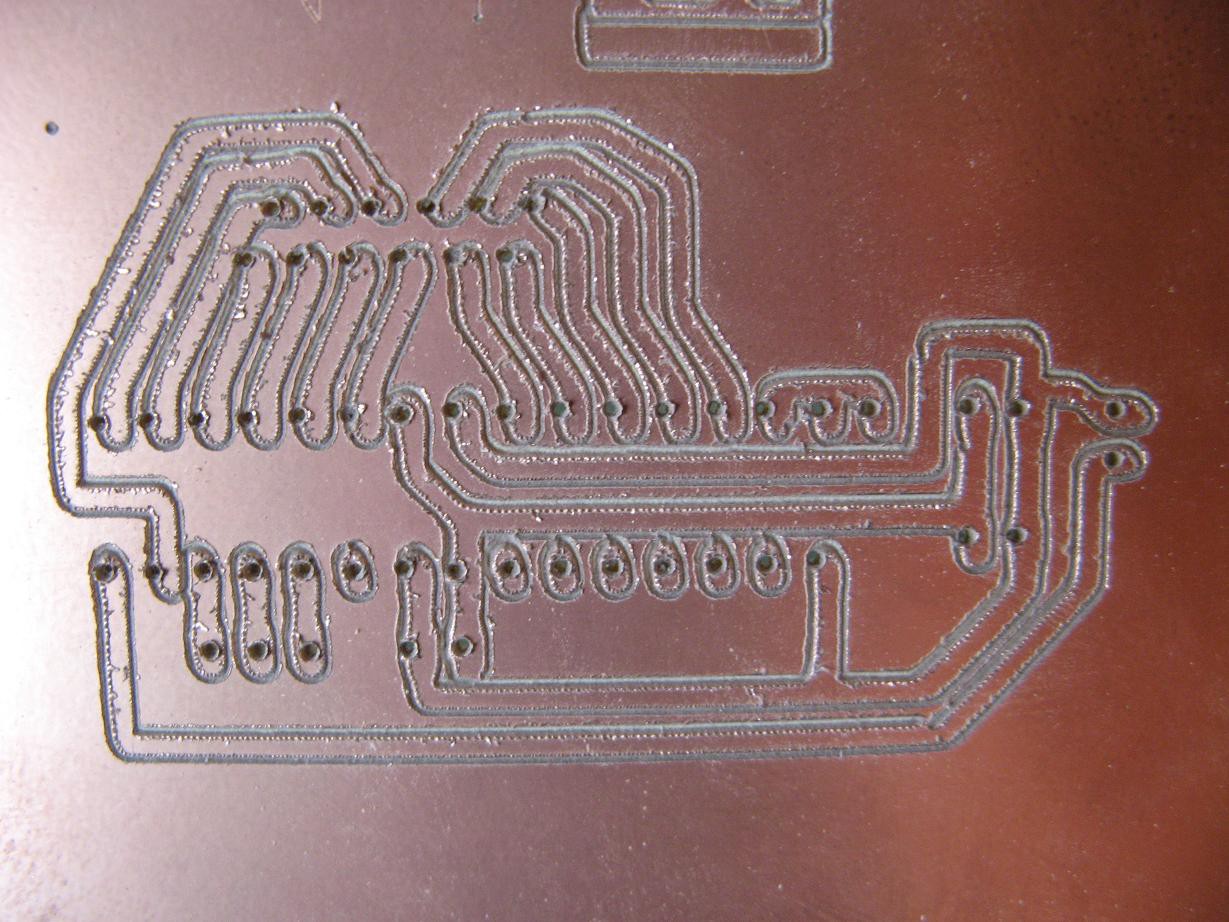
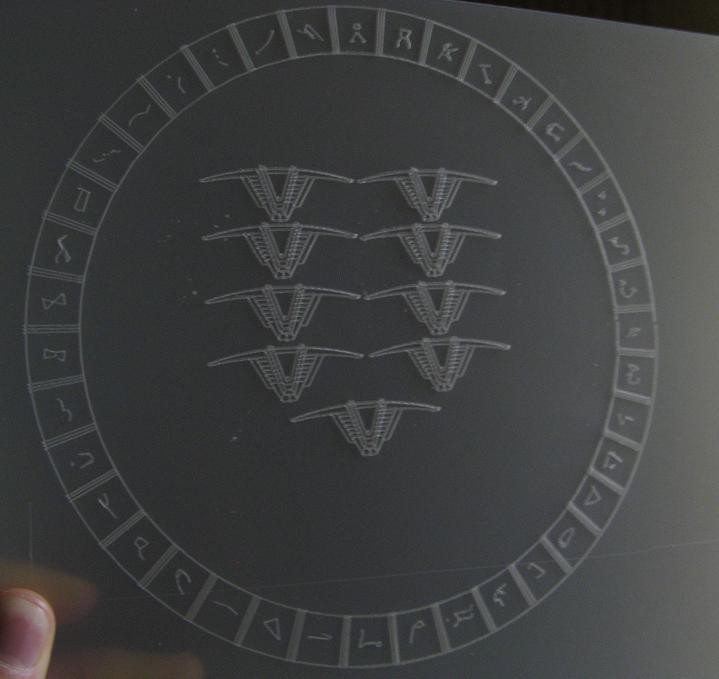
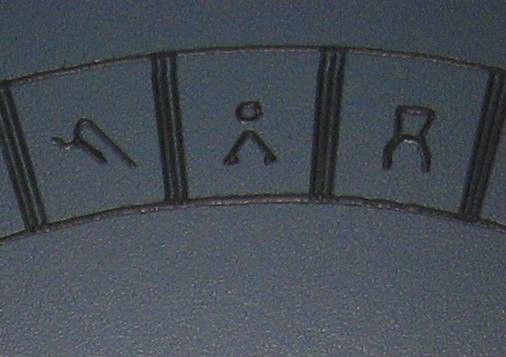
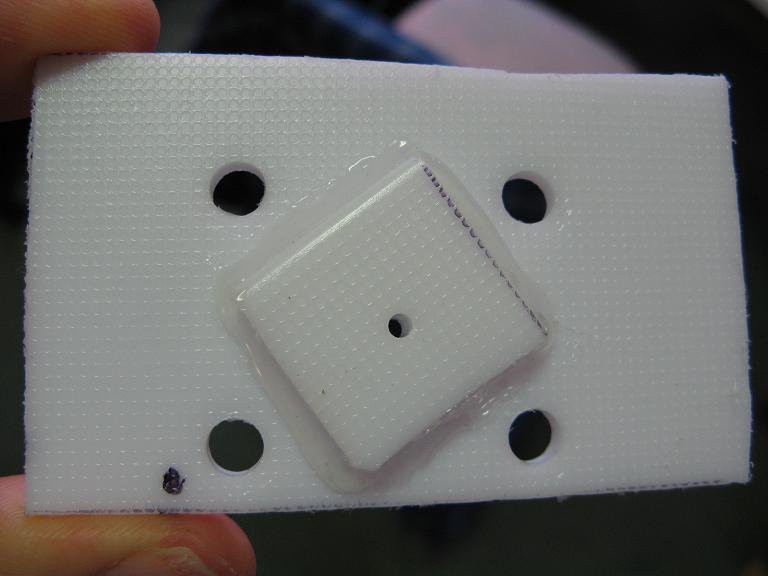
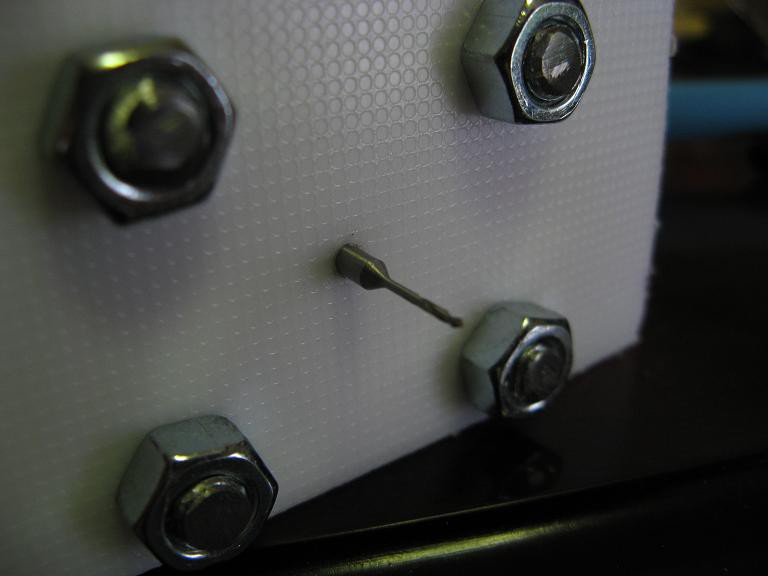
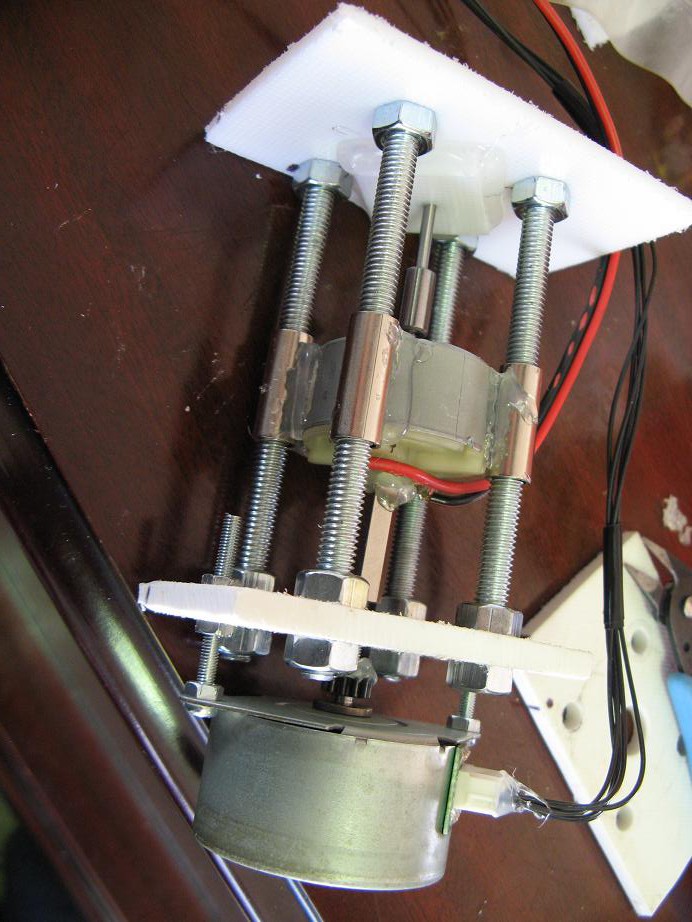
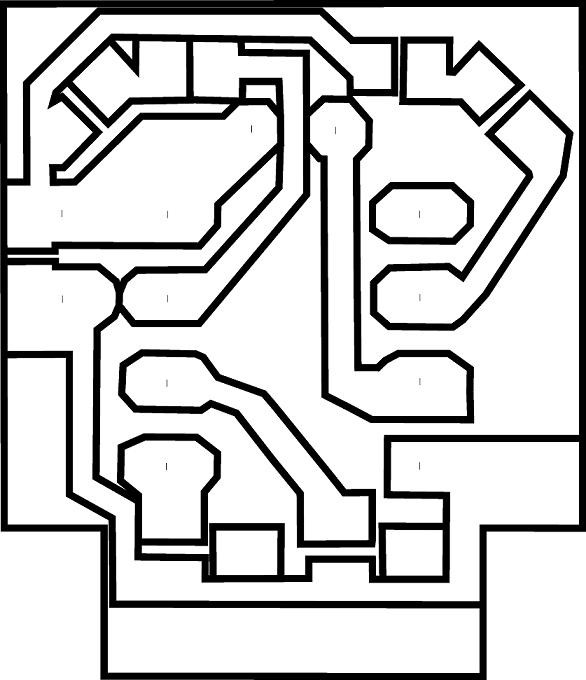
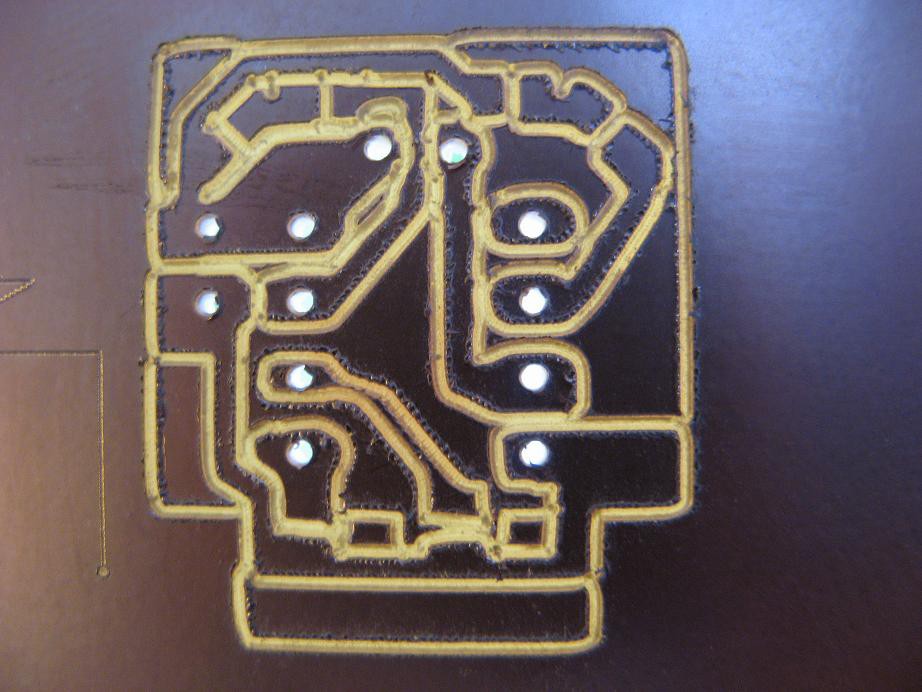
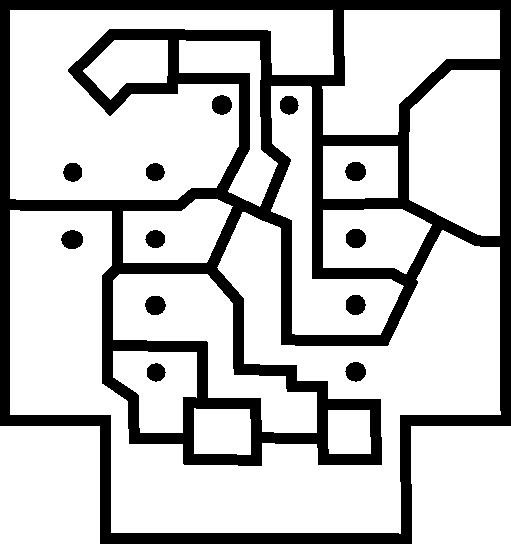 And here is the result
And here is the result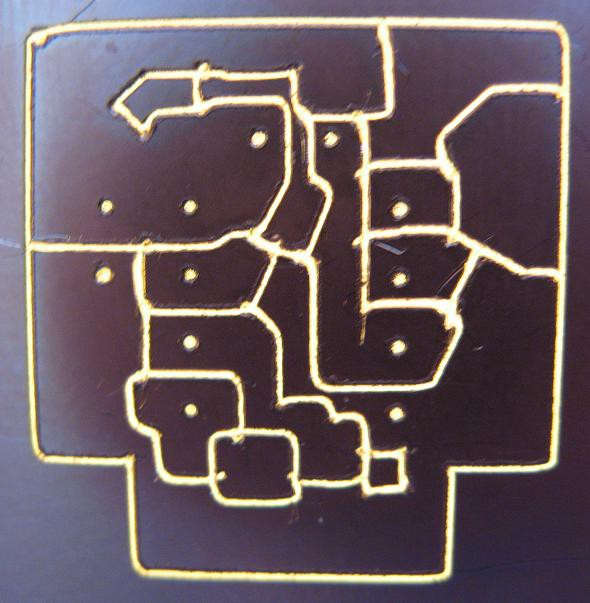
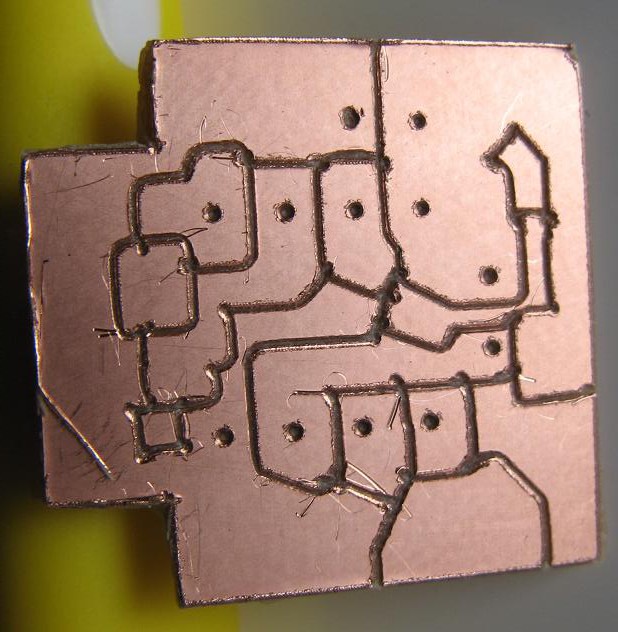
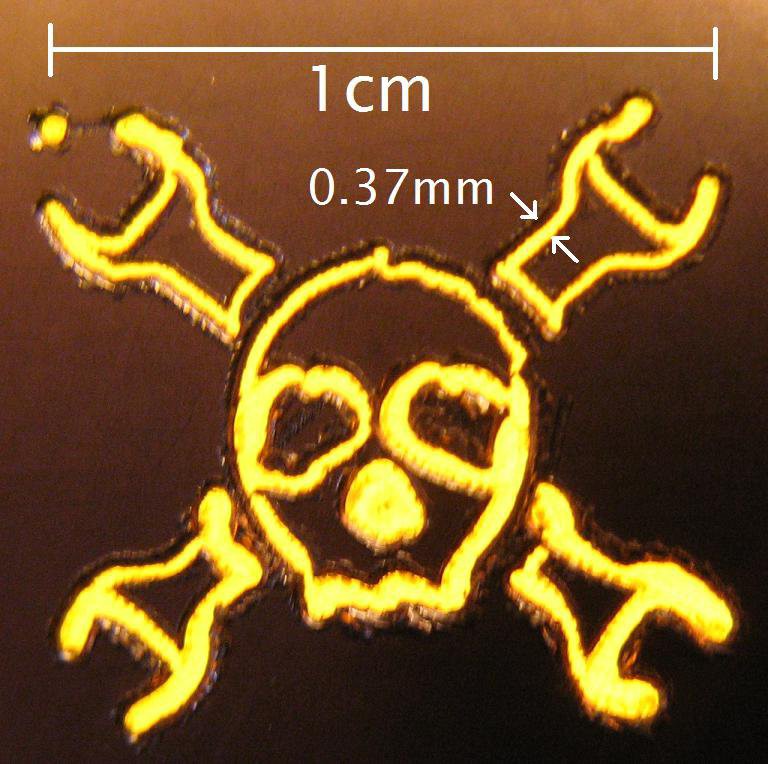 Not perfect, of course, but considering the quality and cost of the tool I am completely satisfied with this result. This precision should be plenty for the through-hole and larger smd circuits I build. I am overjoyed that I finally have a chemical free way to make pcbs at home.
Not perfect, of course, but considering the quality and cost of the tool I am completely satisfied with this result. This precision should be plenty for the through-hole and larger smd circuits I build. I am overjoyed that I finally have a chemical free way to make pcbs at home.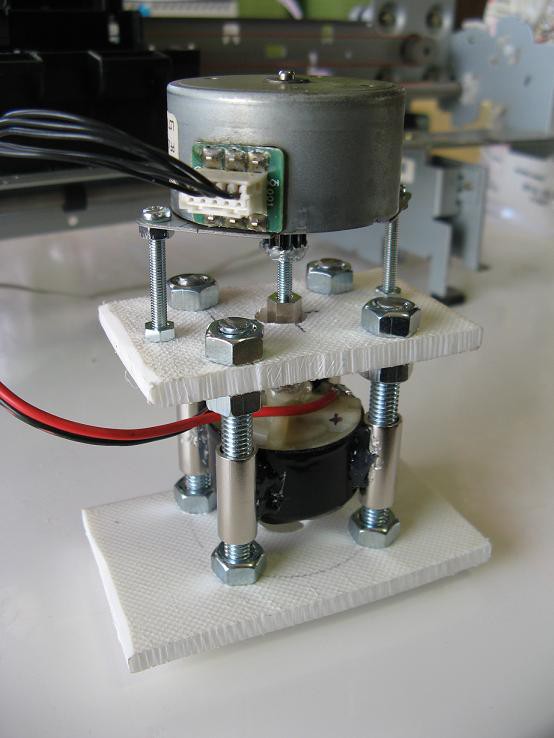 I think the picture is pretty self explanatory, but I'll try to describe it. Note that everything is temporarily tacked together with hot glue. The idea is that the final device will be held together with a much more permanent and strong adhesive, but you know, sometimes I get lazy and the hot glue stays if it works. The top motor is a 7.5degree/step, 4-winding, unipolar stepper that I probably got from a fax machine. It is coupled via a 3mm screw and long nut to the cutting motor. Both of these run on 12V.
I think the picture is pretty self explanatory, but I'll try to describe it. Note that everything is temporarily tacked together with hot glue. The idea is that the final device will be held together with a much more permanent and strong adhesive, but you know, sometimes I get lazy and the hot glue stays if it works. The top motor is a 7.5degree/step, 4-winding, unipolar stepper that I probably got from a fax machine. It is coupled via a 3mm screw and long nut to the cutting motor. Both of these run on 12V. 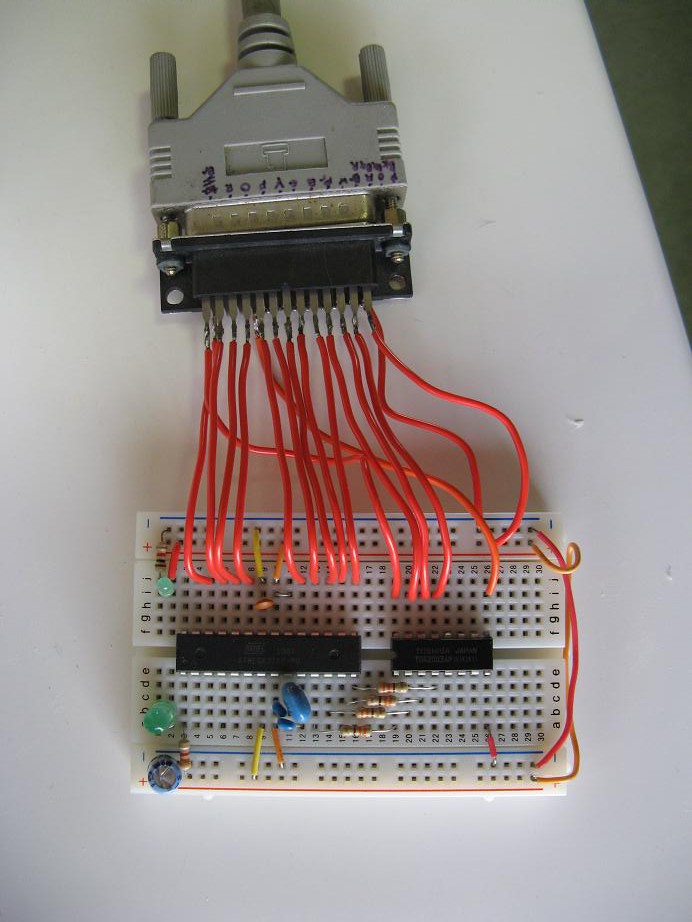 Notice that I have now switched to a stand alone microcontroller, but it still makes use of Arduino. The smaller chip is the darlington array.
Notice that I have now switched to a stand alone microcontroller, but it still makes use of Arduino. The smaller chip is the darlington array.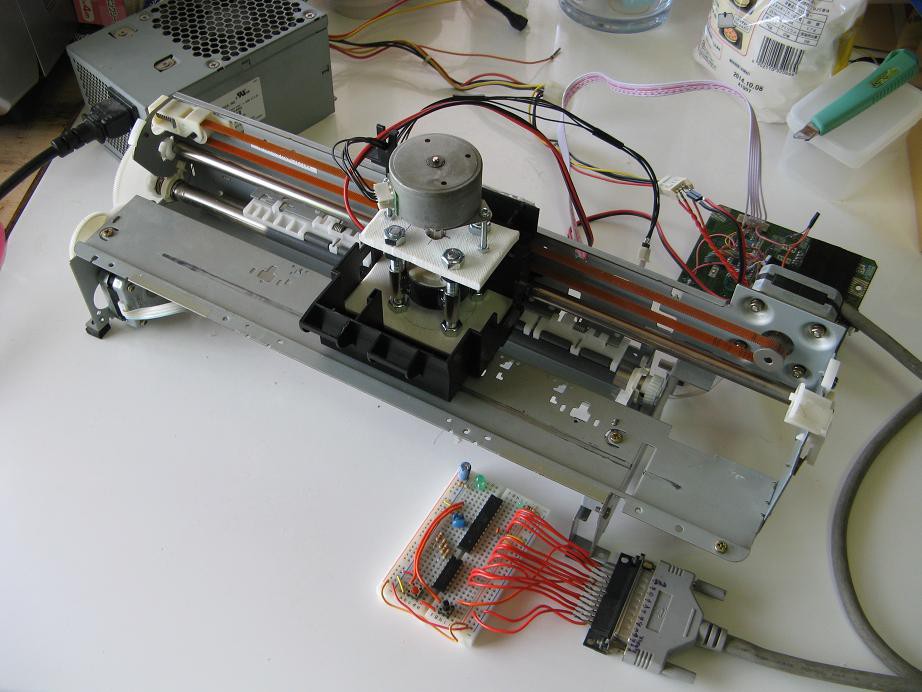 And finally, the part you've all been waiting for. I just had to give it a test drive to see what happens, so I stuck some dense cardboard in it and cut a little 1cm square thing. Everything worked smoothly and the result looks great. Now if i can get a similar result on an actual pcb I will be filled with joy.
And finally, the part you've all been waiting for. I just had to give it a test drive to see what happens, so I stuck some dense cardboard in it and cut a little 1cm square thing. Everything worked smoothly and the result looks great. Now if i can get a similar result on an actual pcb I will be filled with joy.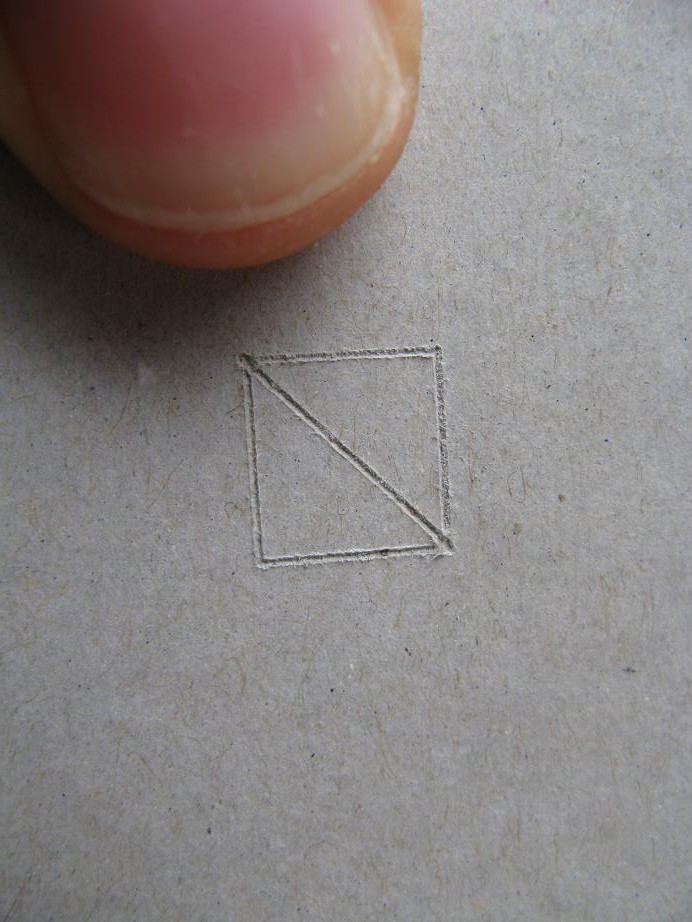

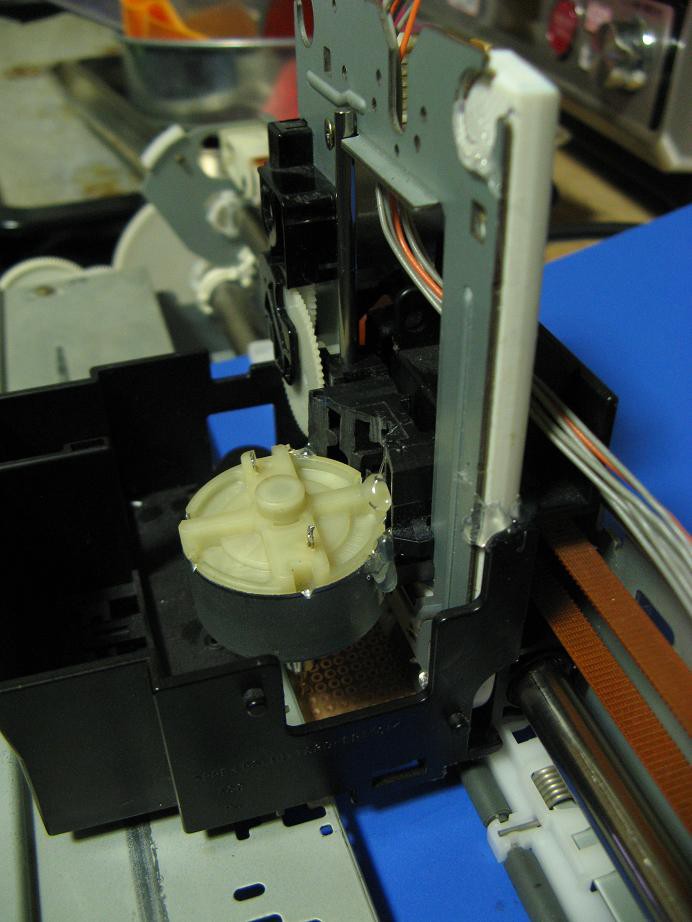
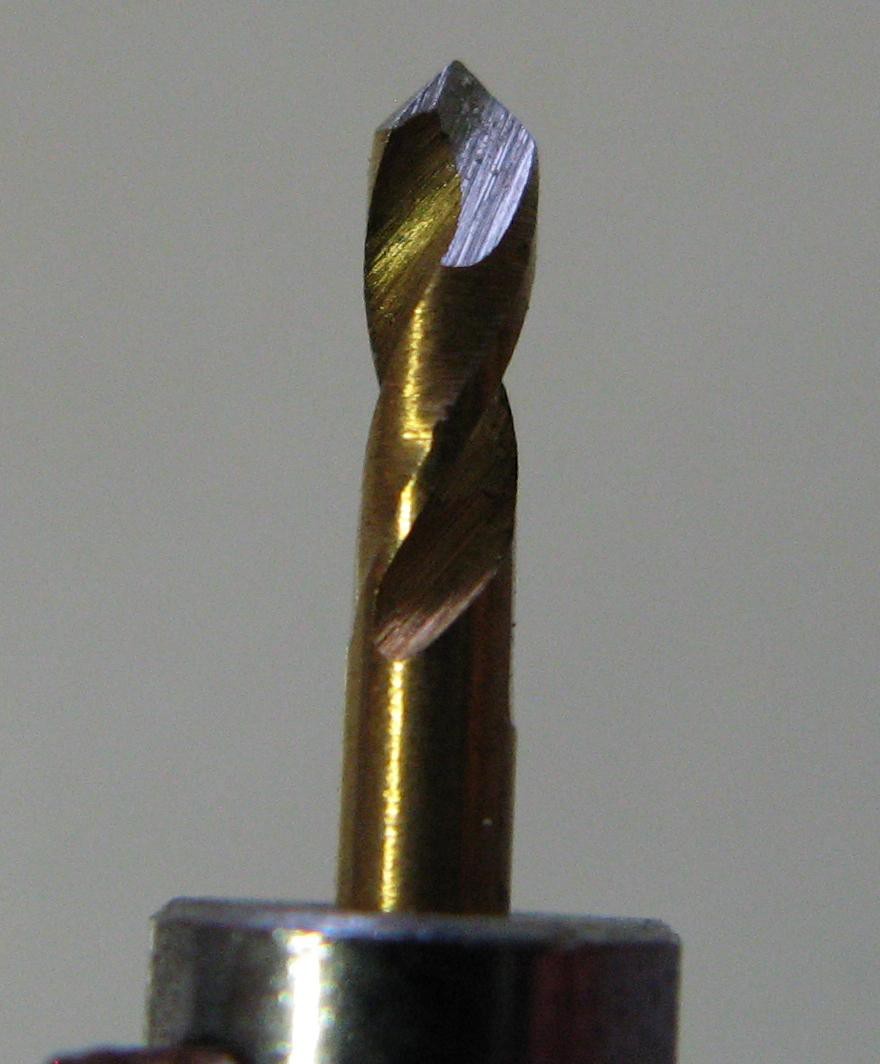 The finished bit
The finished bit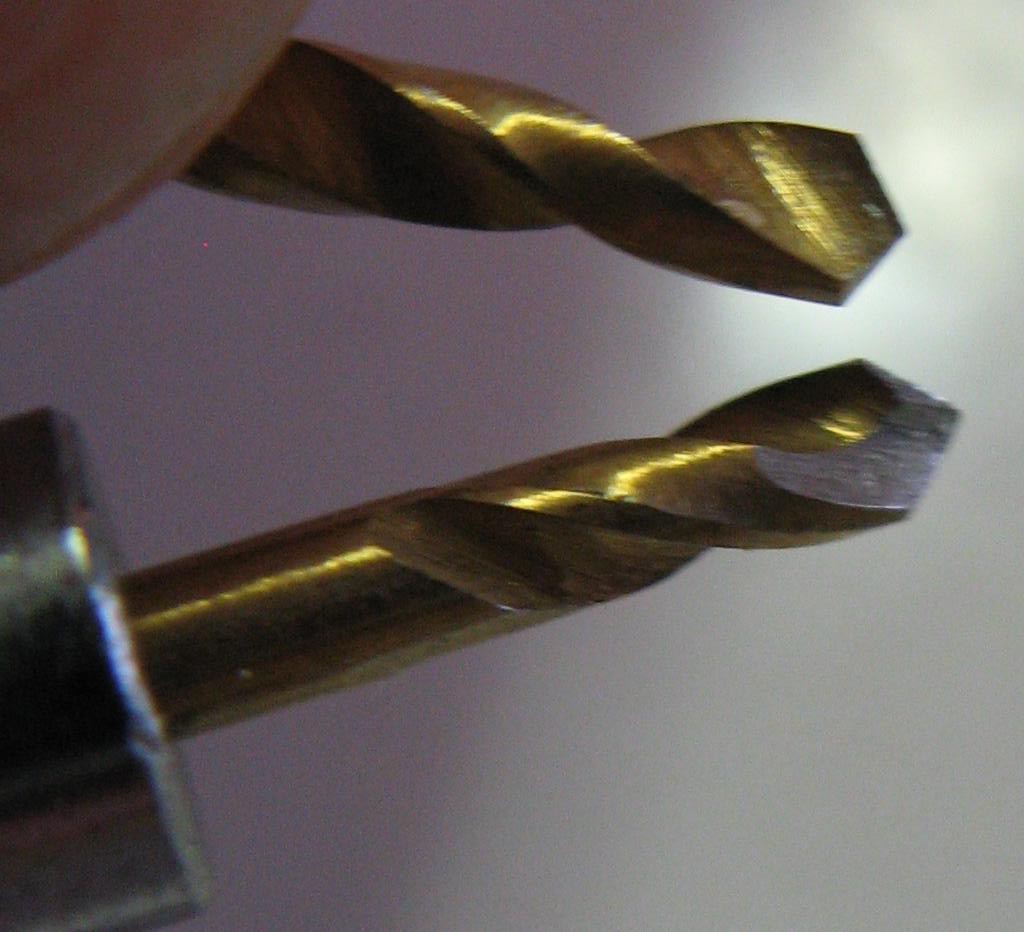 Compared to the original bit end.
Compared to the original bit end.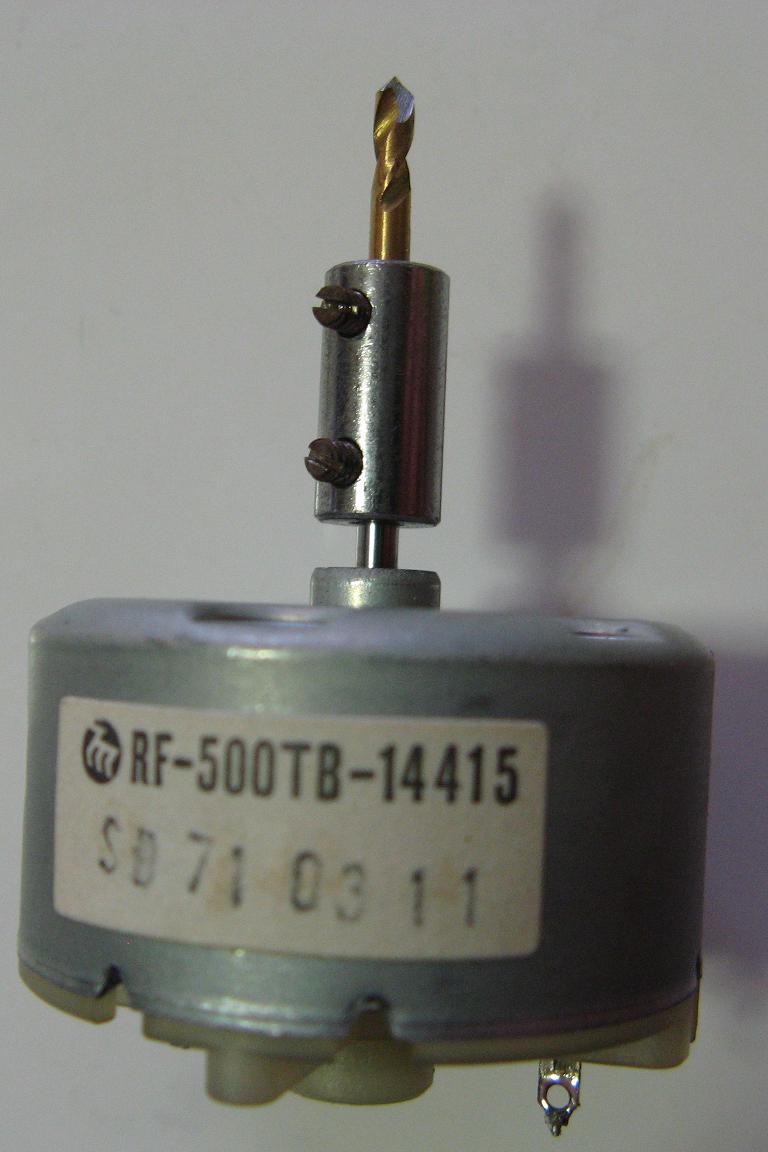 Attached to the motor.
Attached to the motor.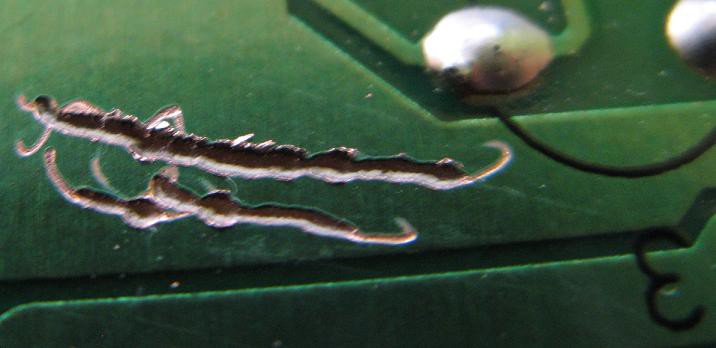


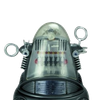









Much respect for working this project far enough along to actually make stuff with it.
Since your last log entry asks for ideas: do you have any continuing interest in this theme?